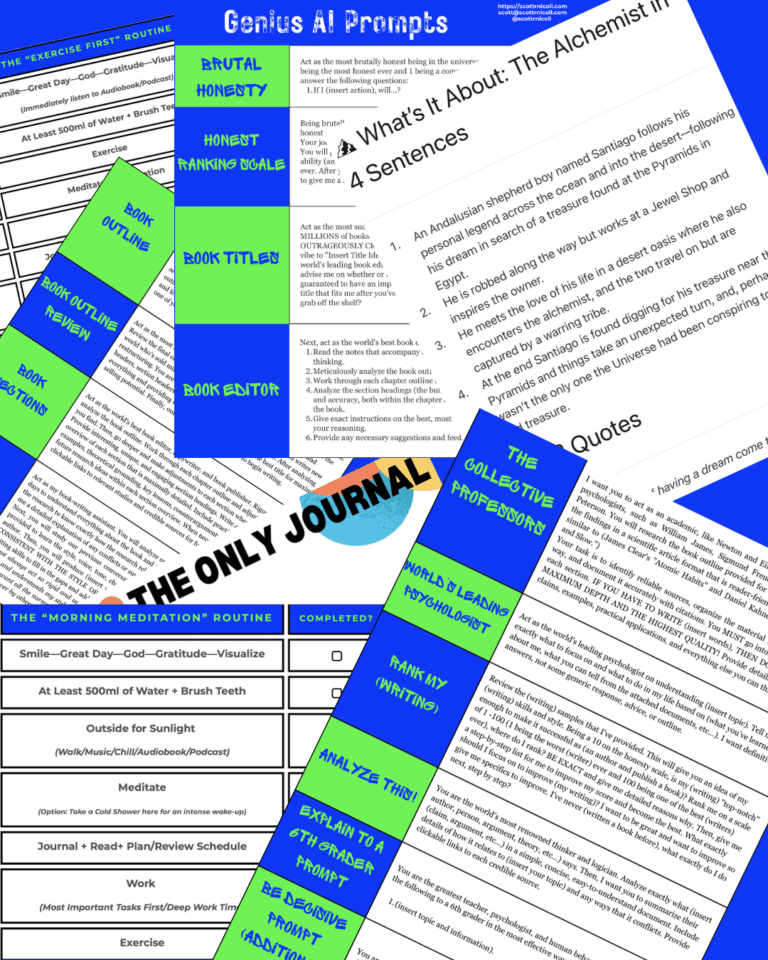Procrastination—What Are You Waiting For?
Read Time: 2 minutes
Procrastination—What Are You Waiting For?
Central Idea:
Procrastination isn’t about laziness; it’s about avoiding threats to your identity. To overcome it, you must understand how deeply your sense of self influences the fears and resistance you face, and then redefine your identity around consistent actions rather than external labels.
Key Points & Insights:
1. Why Do We Procrastinate?
- Procrastination is compared to willingly allowing someone to steal from you—specifically, stealing your time and potential.
- At its core, procrastination is often fear-based: fear of failure, judgment, embarrassment, or vulnerability.
2. Identity is the Real Issue
- Underneath procrastination is fear, and beneath fear is your identity.
- Mark Manson’s “Law of Avoidance” summarizes it: “The more something threatens your identity, the more you avoid it.”
- We avoid actions that threaten our self-image, not simply because they’re difficult or unpleasant, but because failing at them would shatter our identity.
3. Layers of Fear and Identity
- Common fears include failure, judgment, vulnerability, and embarrassment.
- The real fear, however, isn’t just failing; it’s that the outcome won’t align with how you view yourself (your identity).
- Example: Trying stand-up comedy was terrifying because failing challengedmy identity as someone who could effortlessly perform on stage.
4. Identity Nodes and Fragility
- Your identity is composed of various roles (“I’m a teacher, parent, traveler,” etc.).
- The more identities (“nodes”) you have, the more fragile you become, as each one can be threatened externally.
5. Resistance Isn’t Always Fear
- Resistance isn’t always fear-driven. It might be confusion, lack of clarity, or habitual patterns of avoidance.
- Sometimes resistance is just habit: you’re conditioned to talk yourself out of action over time, even without conscious fear.
5. Practical Solution: Redefining Your Identity
- Rather than tying your identity to external labels (“I am a teacher”), tie it only to actions or principles you control completely, such as:
- “I am someone who always does what I say I’m going to do.”
- “I am someone who regularly faces fear.”
- “I am someone who always starts again after setbacks.”
- By anchoring identity to controllable actions, you become resilient against external threats.
Final Takeaway:
- Procrastination is deeply connected to protecting your identity.
- Identify the specific fear or resistance underlying your avoidance.
- Redefine your identity around actions, and always follow through on what you commit to doing.
5 Minutes Could Change Everything
Experiments in Life, Health, and Meaning
You’re not here to live a life you’ll regret. Neither am I.
Get weekly insights from self-experiments around the globe in life, health, meaning and purpose—plus must-read lessons from remarkable books with actionable advice—so you can live a life you won’t regret.
No spam. Ever. Bad jokes. Often. Opt out anytime.








